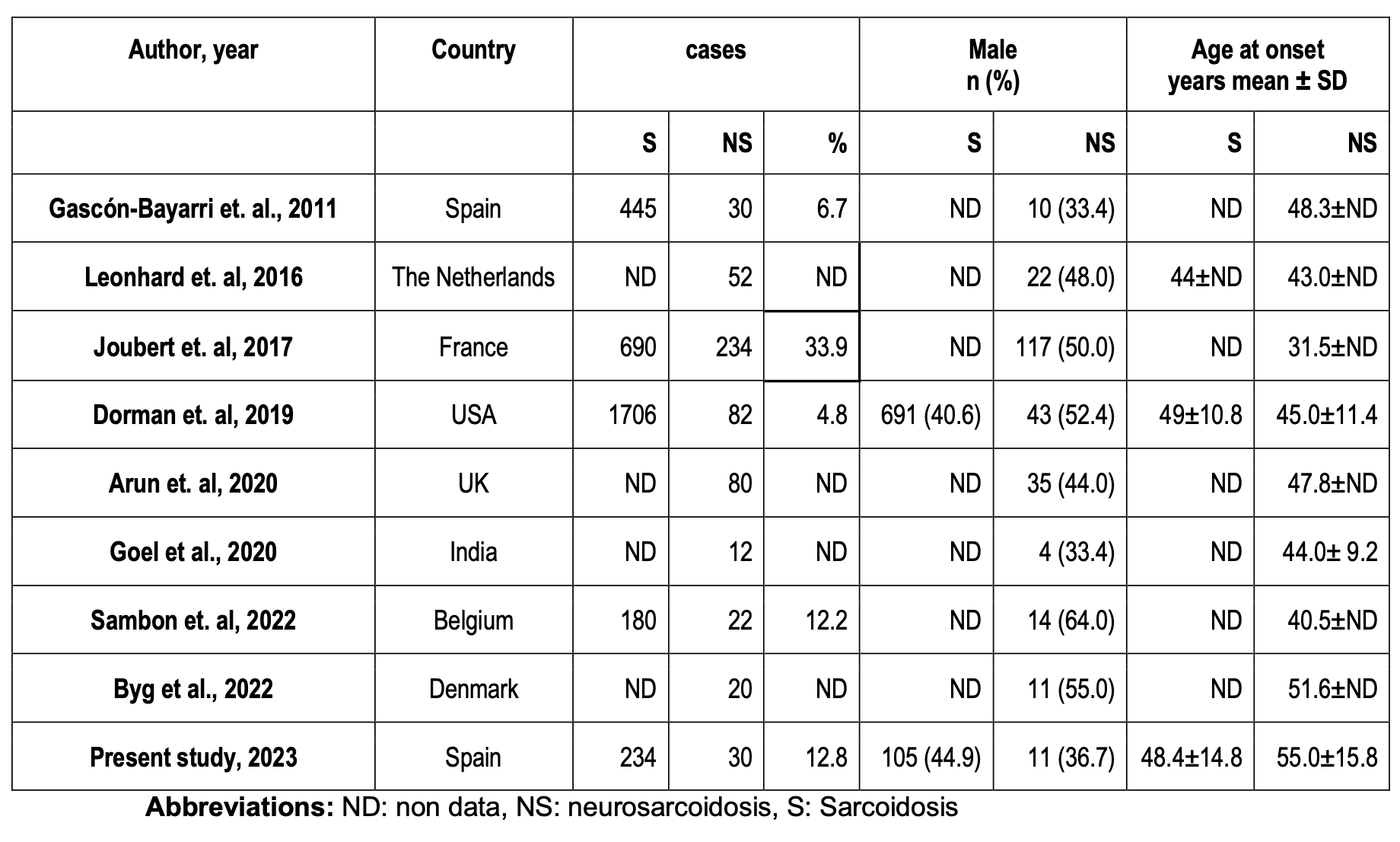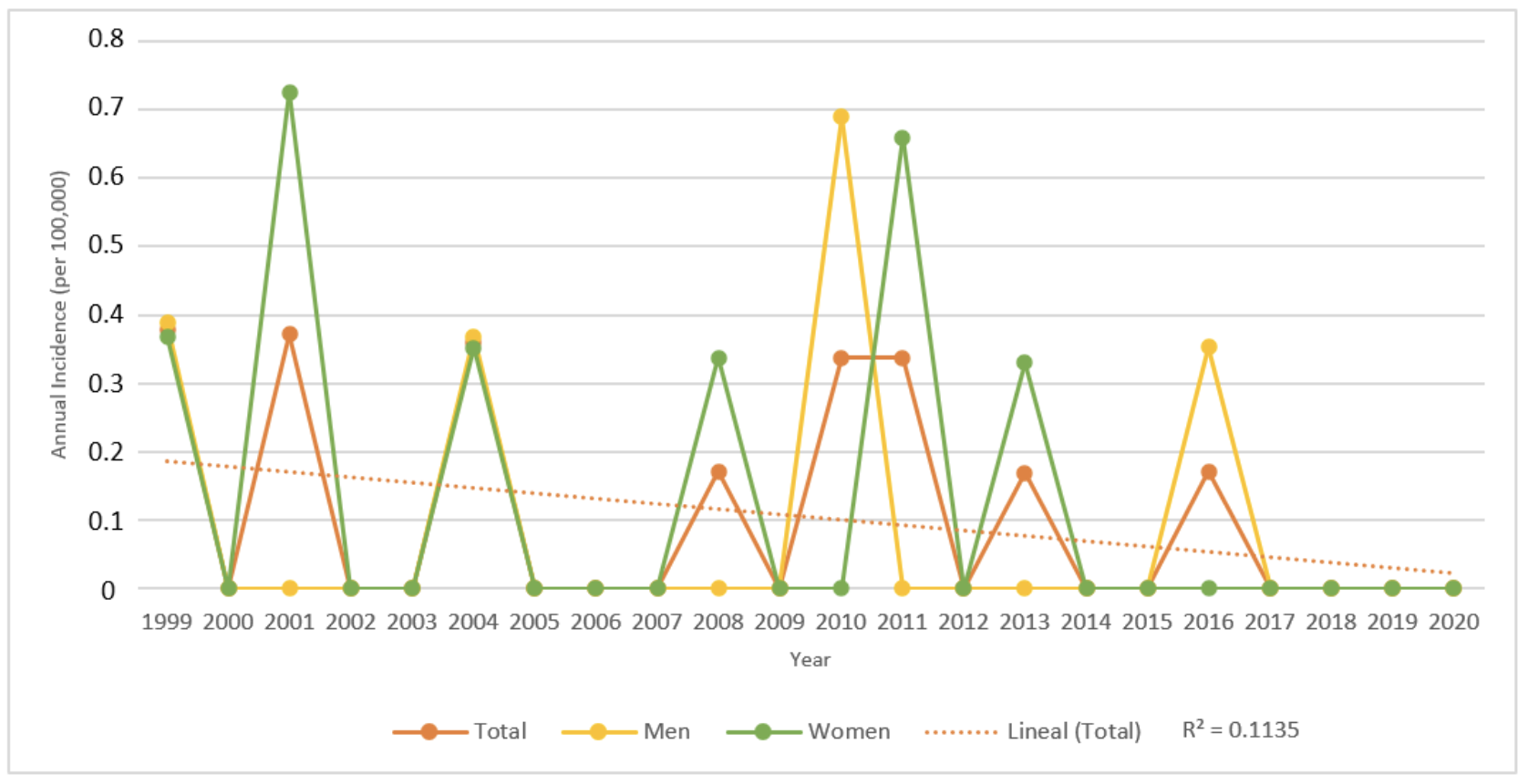Session Information
Date: Tuesday, November 14, 2023
Title: (1913–1944) Miscellaneous Rheumatic & Inflammatory Diseases Poster III
Session Type: Poster Session C
Session Time: 9:00AM-11:00AM
Background/Purpose: Neurosarcoidosis (NS) is a serious and relative uncommon complication of sarcoidosis. Data on incidence is scarce and varies worldwide. Our objective is toestimate NS epidemiology in Northern Spain.
Methods: Patients diagnosed with sarcoidosis at a University hospital in Northern Spain, between January 1999 and December 2019 were assessed. Sarcoidosis diagnosis was established according to ATS/ERS/WASOG criteria as follows: compatible clinical and radiological presentation, histopathologic confirmation, and exclusion of other granulomatous diseases. NS was diagnosed according to the NS Consortium Consensus Group. Demographic and clinical data were collected. The incidence of sarcoidosis between 1999-2019 was estimated by gender, age, and year of diagnosis.
Results: NS was observed in 30 of 234 (12.8%) (19 women/ 11 men) (mean age: 55.0±15.8 years) patients with sarcoidosis. The underlying neurological manifestations were chronic headache (n=13, 43.4%), peripheral neuropathy (n=6, 20.0%), cranial neuropathy (n=5, 16.7%), spinal cord abnormalities (n=3, 10.0%) and aseptic meningitis (n=3, 10.0%). A comparison between different geographical areas is summarized in Table 1. There are wide variations in frequency (US:4.8% to France:33.9%), gender predominance and age at diagnosis (31 to 55 years) depending on the geographical area. Nevertheless, most of the patients were diagnosed in the 5th decade of life. Annual incidence of NS in our population area in the 1999-2019 period was 0.11 per 100000 people, 95% (CI:0.11-0.26); 0.08 (0.07-0.24) in men, 0.13 (0.09-0.24) in women. There were variations in annual incidences, ranging from a minimum value of 0.08 in 2013-2014 to a maximum of 0.19/100000 population in 1999-2000. A downward trend in annual incidence over time was observed. Nevertheless, the correlation was weak(r2=0.1135) (Figure 1).
Conclusion: The epidemiological characteristics of NS is very different in frequency. Frequency estimated in this study was similar to that of other countries.
To cite this abstract in AMA style:
Serrano-Combarro A, Herrero-Morant A, Sanchez-Bilbao L, Gonzalez-Mazon I, Martinez-Lopez D, Martin-Varillas J, Fernandez-Ramon R, Blanco R. Neurosarcoidosis Disease Epidemiology. University Hospital in Northern Spain 1999-2019 [abstract]. Arthritis Rheumatol. 2023; 75 (suppl 9). https://acrabstracts.org/abstract/neurosarcoidosis-disease-epidemiology-university-hospital-in-northern-spain-1999-2019/. Accessed .« Back to ACR Convergence 2023
ACR Meeting Abstracts - https://acrabstracts.org/abstract/neurosarcoidosis-disease-epidemiology-university-hospital-in-northern-spain-1999-2019/


